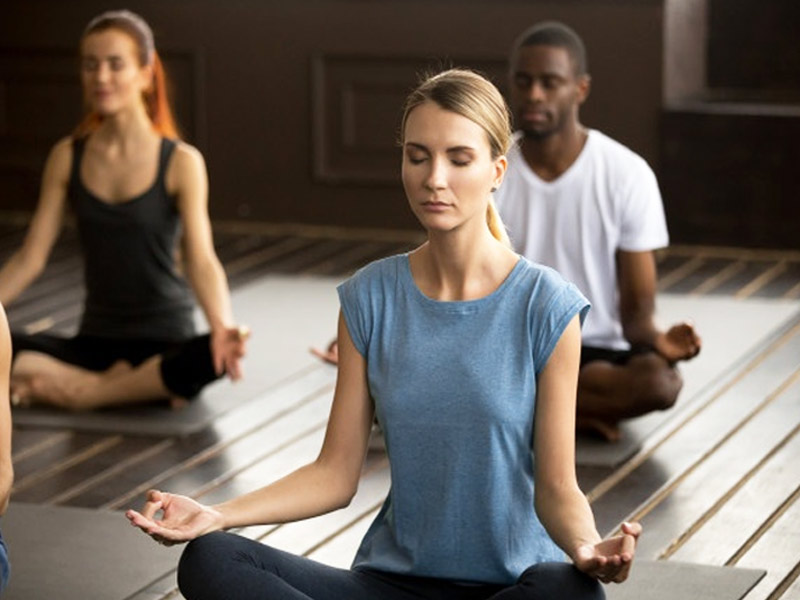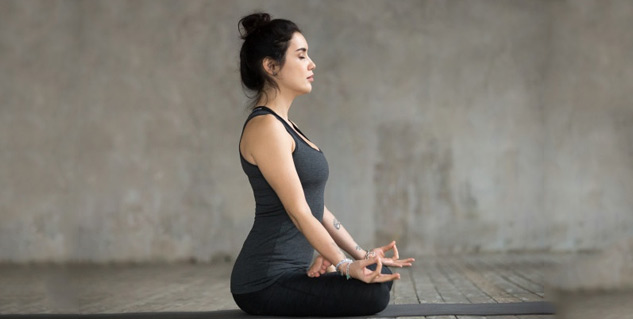
Grief is something everyone experiences. Be it the passing of a loved one, a serious health issue, or heartbreak, there is a feeling of hollowness in the chest while the pain often physically hurts. Although friends and family do extend help, it takes some time to cope with it. Often people devise different methods to deal with the feeling. One such holistic way that might help is yoga. Yes, this mind and body system that is more associated with flexibility and complex postures can help you to some extent with grief too. To understand this better, Onlymyhealth spoke to Dr Rohit Sabharwal, a Periodontist for the last 22 yrs, who is presently the Regional Director of The Art of Living’s Sri Sri School of Yoga.
“When practised in its entirety, Yoga definitely helps,” said Dr Sabharwal. “Most people associate Yoga with only ‘asanas’ (poses), but it also consists of ‘pranayama’ (breathwork), meditation and exhaustive knowledge about the workings of the body, mind and soul. So when we do pranayama, which is the practice associated with breathwork, then the practice starts to alter the state of mind,” the doctor said.
How Does Pranayama Help In Dealing With Grief?

(Photo Credit: Freepik)
While grieving, your mind is generally stuck, and is in a loop. Your mind will not be able to come out of it just by thinking, “I am no longer going to feel grief.” “You cannot handle the mind at the level of the mind,” said Dr Sabharwal. This is how pranayama helps:
- Generally, grief is related to an event of the past, recent or long gone.
- When this happens, your mind gets stuck in the past, those memories keep coming back, and your mind gets into a loop.
- So in such a case, more than ‘asanas’, ‘pranayama’ helps.
- This is because ‘pranayama’ involves rhythmic breathwork, it starts to pull the mind out of that loop because breath is the link between the body and the mind.
- Hence, when you practise ‘pranayama’, your mind that is either stuck in the past or the future, starts focusing on the present moment.
“And as soon as the mind comes out of this loop, which is again and again, going and chewing up on something that has happened in the past, breath can help bring the wandering mind back to the present moment. This is how yoga can help people come out of grief,” the doctor said.
Also read: Grief Affects Mental As Well As Physical Health
Yoga Poses & Pranayama For Grief

(Photo Credit: Freepik)
Yoga poses do not affect the state of mind as much as pranayama does. ‘Asanas’ can affect your muscles, or relax them, make you more flexible, and aid blood circulation. “No particular pose can have such an impact on your mind unless practised for a long time,” said Dr Sabharwal. However, if you are looking for a pose for meditation, then ‘sukhasana’ (easy pose) can help.
- For this, sit cross-legged on the floor.
- You can place your palms on your knees.
- Keeping your spine erect, close your eyes and start taking slow, deep, rhythmic and continuous breaths.
Also, as per thousands of years old yoga texts, practising eye exercises can also help. This is because when you rotate your eyeballs, without moving your neck, your mind becomes blank. “This can help people come out of grief,” said Dr Sabharwal.
While grieving, which is quite similar to being in a depressed state, your ‘prana’ is low. So, ‘bhastrika pranayama’ can be a good practice in moving up the ‘prana’. Here’s how to do it, as per the ‘The Art Of Living’s’ website:
- Start with sitting in ‘sukhasana’.
- Clench your fists and bring them near your shoulders.
- Inhale, extend your arms upwards and open your fists.
- Exhale, bring your palms near your shoulders and clench your fist again.
- Repeat this 20 to 25 times.
Also read: Here Are 5 Helpful Tips To Deal With Grief And Loss Amid The Pandemic
Although there is no so-called correct time to practise yoga, it is best done early in the morning. From 4 to 5.30-6 in the morning, which is known as the ‘brahma muhurta’ is considered the best time to do Yoga. Another best time is just after sunset. You can also practise yoga in the evening for optimal results.
(With inputs from Dr Rohit Sabharwal, a Periodontist for the last 22 yrs, who is presently the Regional Director of The Art of Living’s Sri Sri School of Yoga)
Photo Credit: Freepik
How we keep this article up to date:
We work with experts and keep a close eye on the latest in health and wellness. Whenever there is a new research or helpful information, we update our articles with accurate and useful advice.
Current Version